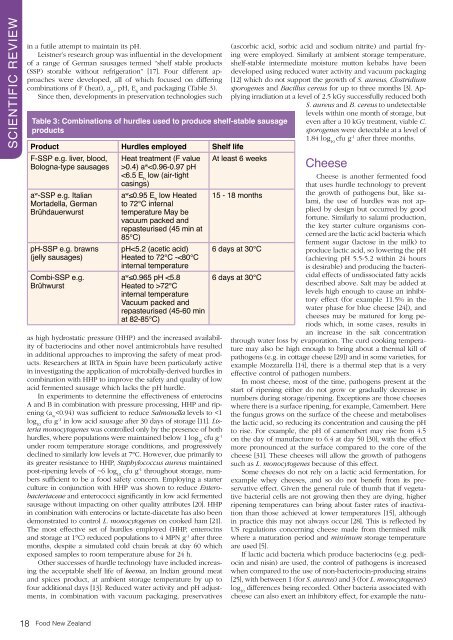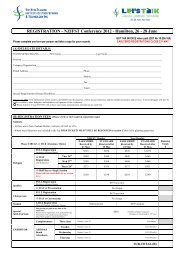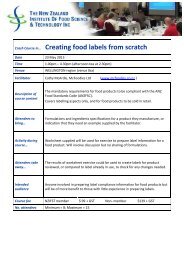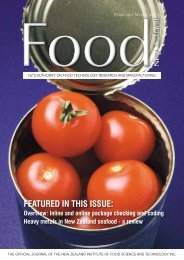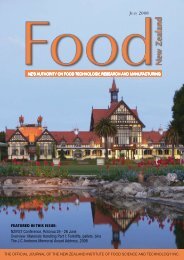featured in this issue - NZIFST - The New Zealand Institute of Food ...
featured in this issue - NZIFST - The New Zealand Institute of Food ...
featured in this issue - NZIFST - The New Zealand Institute of Food ...
Create successful ePaper yourself
Turn your PDF publications into a flip-book with our unique Google optimized e-Paper software.
SCIENTIFIC REVIEW<br />
<strong>in</strong> a futile attempt to ma<strong>in</strong>ta<strong>in</strong> its pH.<br />
Leistner’s research group was <strong>in</strong>fluential <strong>in</strong> the development<br />
<strong>of</strong> a range <strong>of</strong> German sausages termed “shelf stable products<br />
(SSP) storable without refrigeration” [17]. Four different approaches<br />
were developed, all <strong>of</strong> which focused on differ<strong>in</strong>g<br />
comb<strong>in</strong>ations <strong>of</strong> F (heat), a w<br />
, pH, E h<br />
and packag<strong>in</strong>g (Table 3).<br />
S<strong>in</strong>ce then, developments <strong>in</strong> preservation technologies such<br />
Table 3: Comb<strong>in</strong>ations <strong>of</strong> hurdles used to produce shelf-stable sausage<br />
products<br />
Product Hurdles employed Shelf life<br />
F-SSP e.g. liver, blood,<br />
At least 6 weeks<br />
Bologna-type sausages<br />
a w -SSP e.g. Italian<br />
Mortadella, German<br />
Brühdauerwurst<br />
pH-SSP e.g. brawns<br />
(jelly sausages)<br />
Combi-SSP e.g.<br />
Brühwurst<br />
Heat treatment (F value<br />
>0.4) a w


